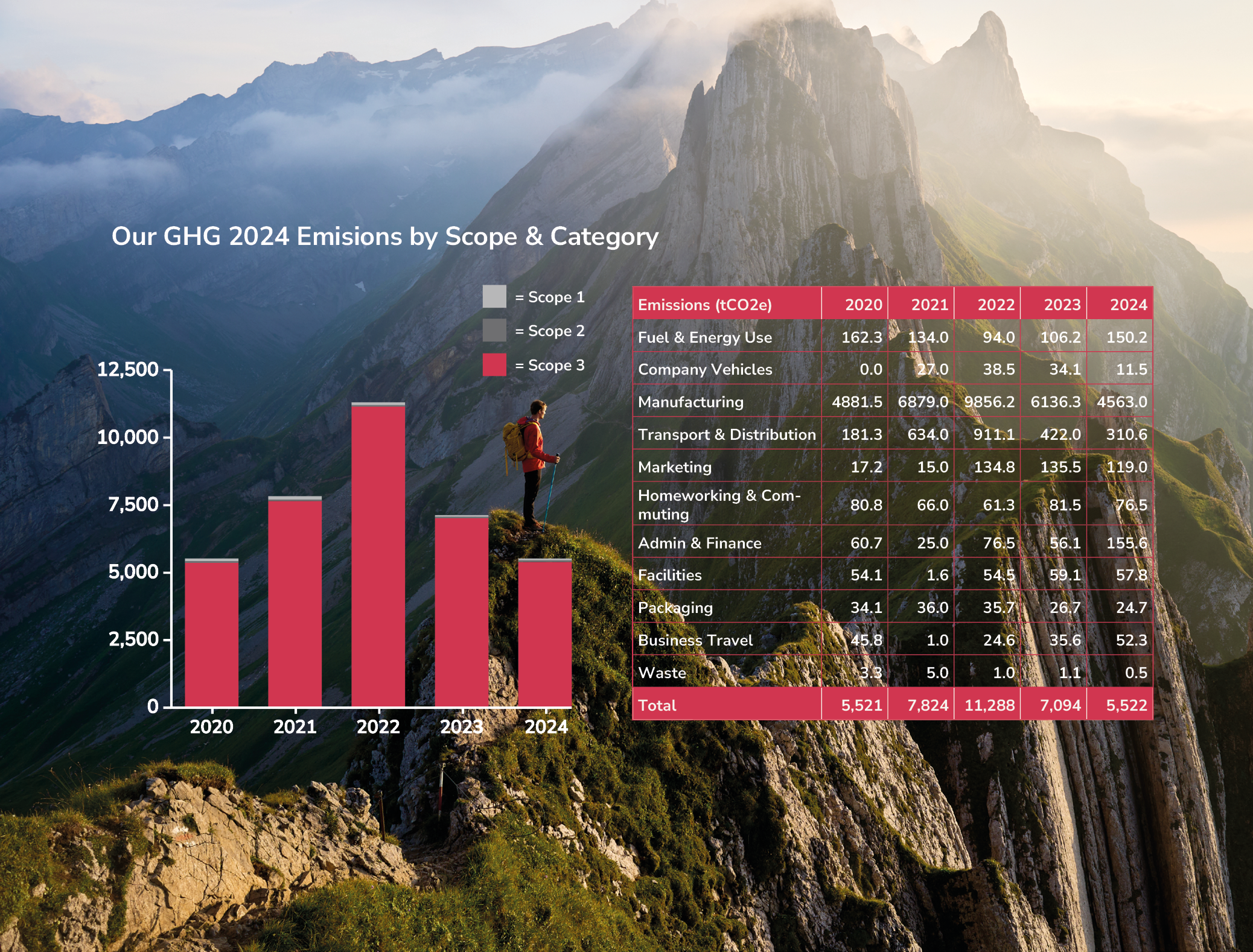Every part of our supply chain uses resources and generates greenhouse gas (GHG) emissions. By measuring these emissions, we can focus on where we can make the biggest difference.
We began tracking our emissions in 2020 and now report annually. In partnership with Small World Consulting, we use a hybrid approach that blends top-down modelling with product-level data, giving us a clearer picture of where our emissions come from and how to reduce them.
GHGs are just one part of the picture. We’re also working to measure other environmental impacts across materials, manufacturing, and logistics.
Our Total Emissions
In 2024, we reduced our total GHG emissions by 26% — the second consecutive year of decline following a peak in 2022.
83% of our emissions come from product manufacturing, and 76% of those are directly linked to textile production — from growing raw fibres to fabric construction. This makes it clear: what we make and where we make it has the biggest impact on our footprint.
We continue to improve the accuracy of our Scope 3 emissions data, which includes all indirect emissions across our value chain. Annual tracking allows us to monitor progress and focus reduction efforts where they’ll have the greatest effect.


Our Product Emissions
Since 2020, we’ve modelled the GHG emissions of every product we make.
The vast majority of our emissions come from manufacturing, not shipping or selling. By calculating the impact of each product, we gain detailed insight into where emissions are generated, helping us make smarter decisions around design, materials, and production.
Our Emissions Target
We aim to reduce our GHG emissions by 6% per year, based on a 2020 baseline.
We don’t believe in relying on carbon offsetting to meet reduction goals. Instead, we’re focused on cutting emissions at the source — through better materials, responsible sourcing, and more efficient operations and transport.










